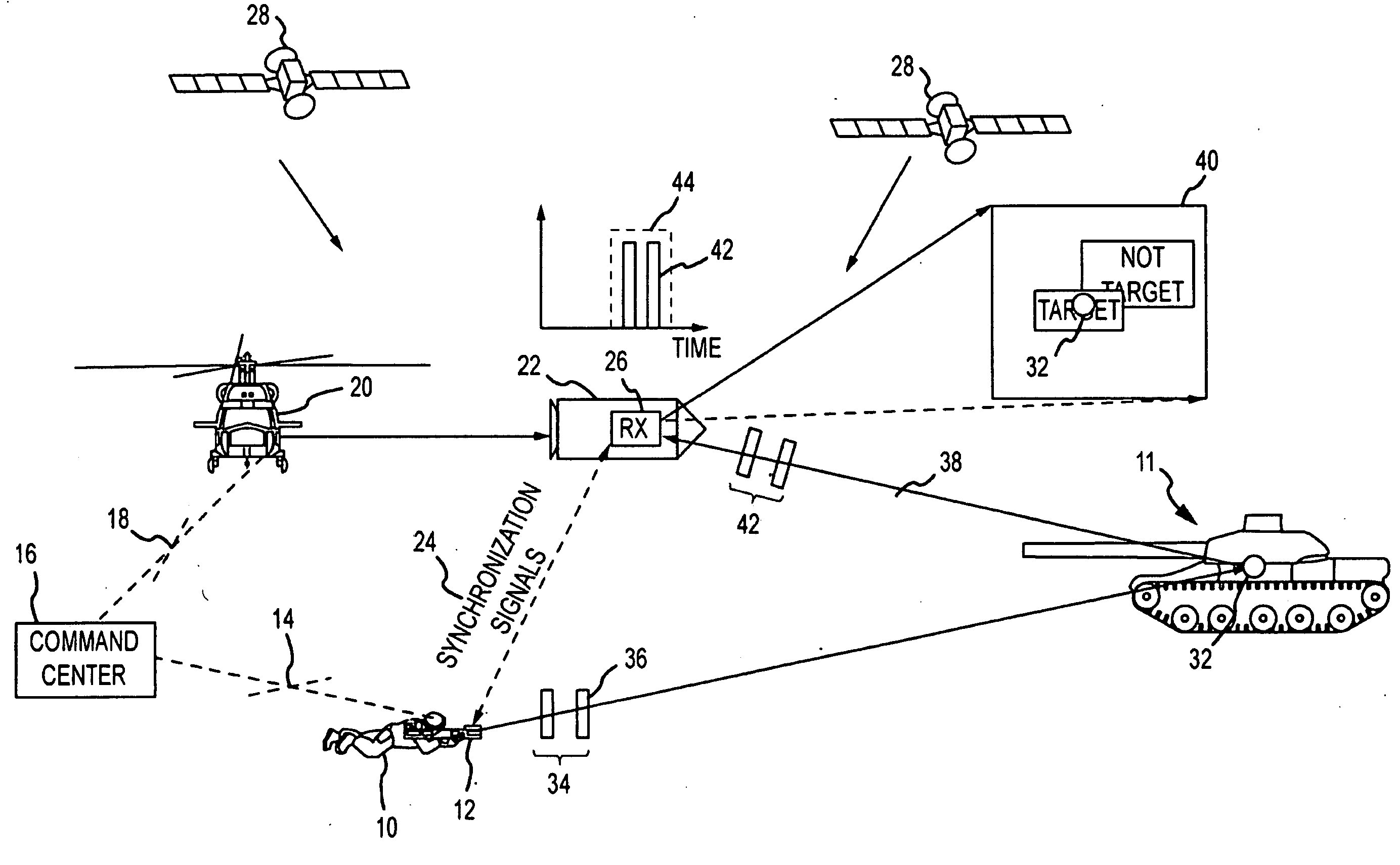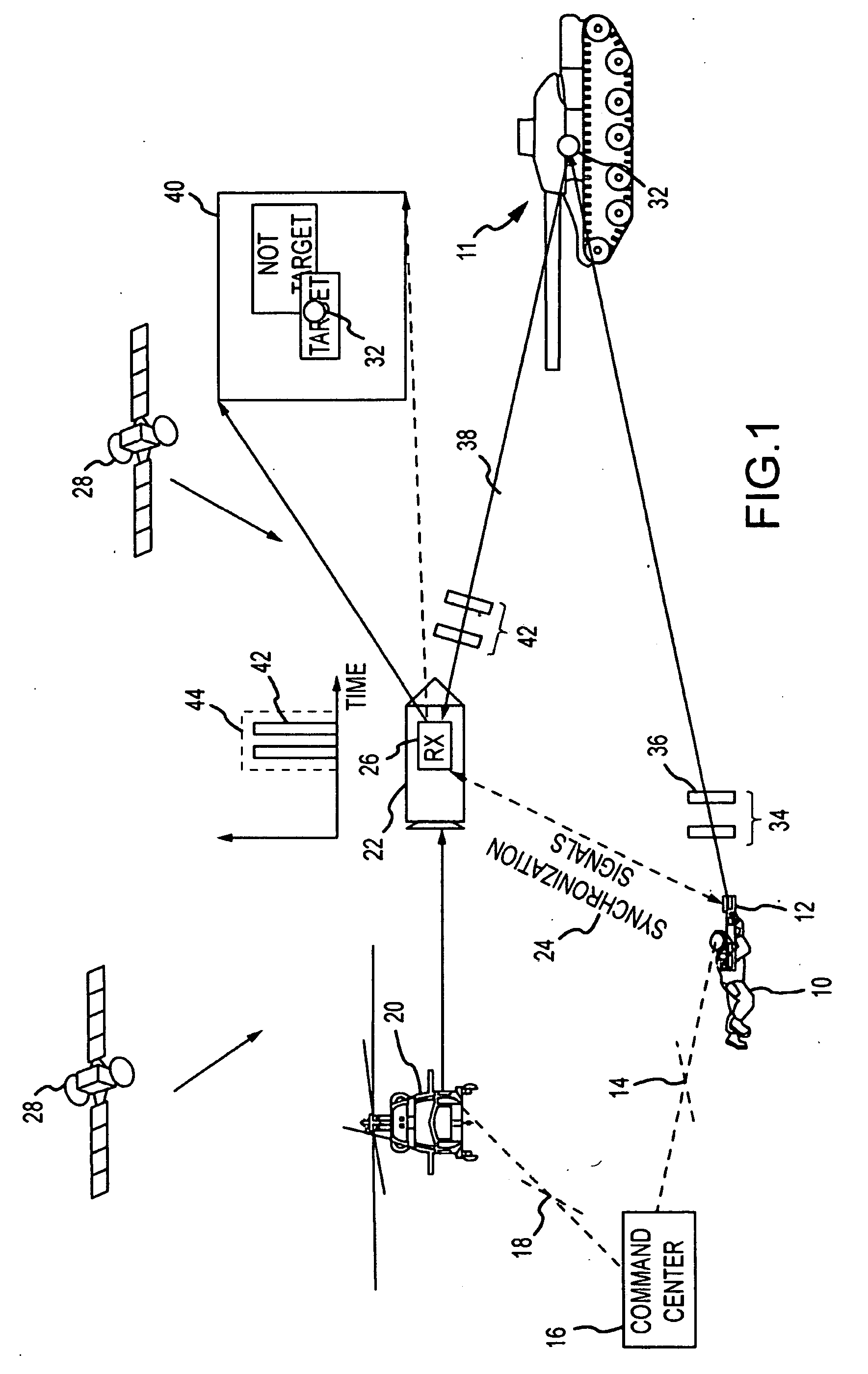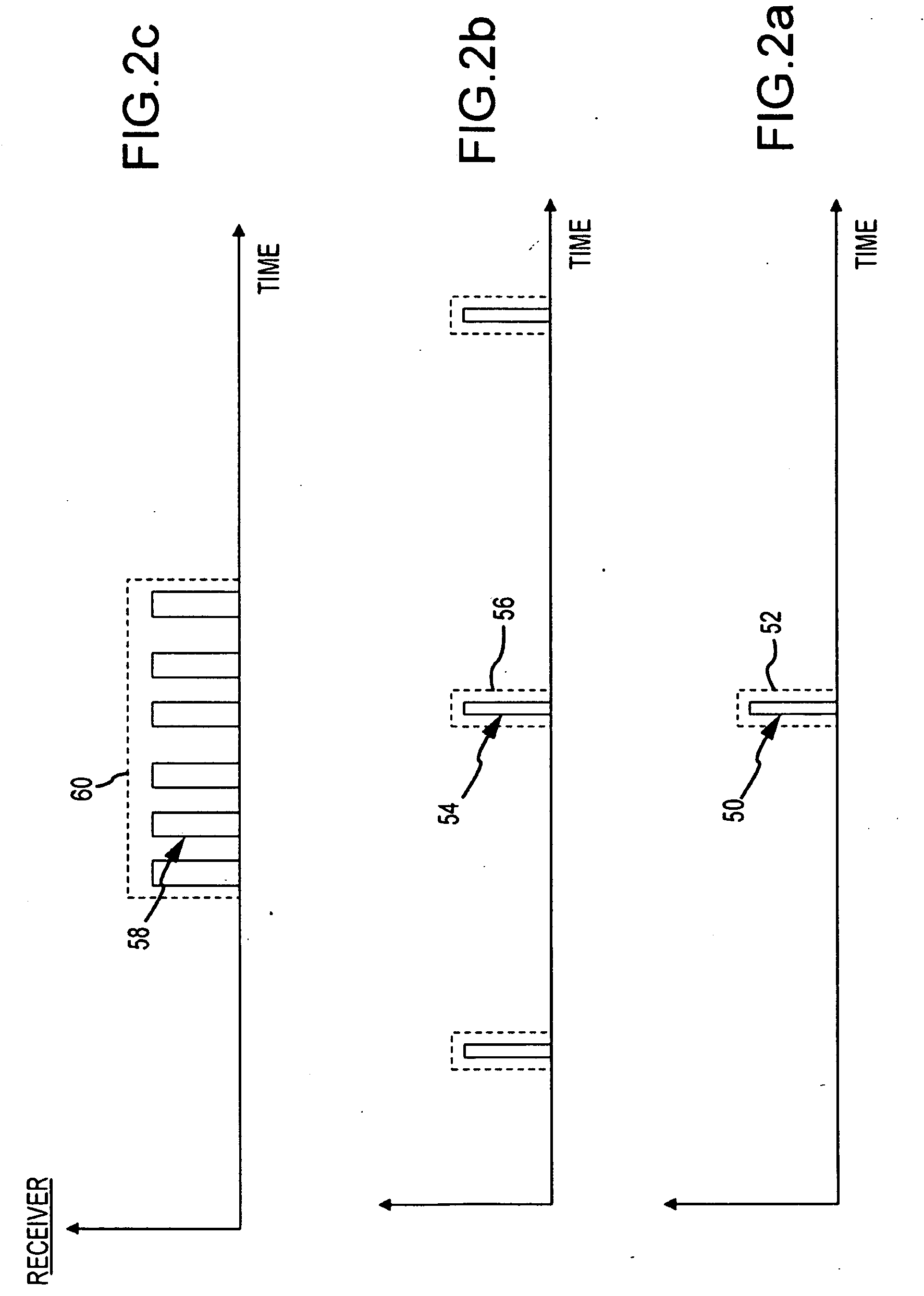Absolute time encoded semi-active laser designation
a laser and absolute time encode technology, applied in direction controllers, instruments, weapons, etc., can solve the problems of increasing the time that laser operators or laser platforms remain exposed, affecting the effectiveness of these systems, and inhibiting the power requirements of lasers to generate high-power high-frequency pulses for extended periods to hold a spot on the target, etc., to achieve the effect of reducing the number of pulses and reducing the total pulse energy
- Summary
- Abstract
- Description
- Claims
- Application Information
AI Technical Summary
Benefits of technology
Problems solved by technology
Method used
Image
Examples
Embodiment Construction
[0024]The present invention describes an innovative approach to SAL designation that uses absolute time coding of the pulse-stream to disambiguate the designator in a manner that reduces the number of pulses in a pulse-stream and reduces the total pulse energy on the target. This requires timing synchronization between the designator and receiver. For improved rejection of unintended returns, more precise time gating (a narrower absolute time window) is used. This can be achieved by removing the path length and / or firing time uncertainties. Absolute time coding reduces the number of pulses and total energy on target in two ways. First, the designator may only have to transmit the pulse-code once. The “spot” appears for the brief time associated with a pulse-stream and disappears; continuous lasing of the target is not required. Second, the designator can be disambiguated using a combination of pulse-code (relative spacing of pulses) and pulse-position (absolute timing of pulses) mod...
PUM
 Login to View More
Login to View More Abstract
Description
Claims
Application Information
 Login to View More
Login to View More - R&D
- Intellectual Property
- Life Sciences
- Materials
- Tech Scout
- Unparalleled Data Quality
- Higher Quality Content
- 60% Fewer Hallucinations
Browse by: Latest US Patents, China's latest patents, Technical Efficacy Thesaurus, Application Domain, Technology Topic, Popular Technical Reports.
© 2025 PatSnap. All rights reserved.Legal|Privacy policy|Modern Slavery Act Transparency Statement|Sitemap|About US| Contact US: help@patsnap.com



